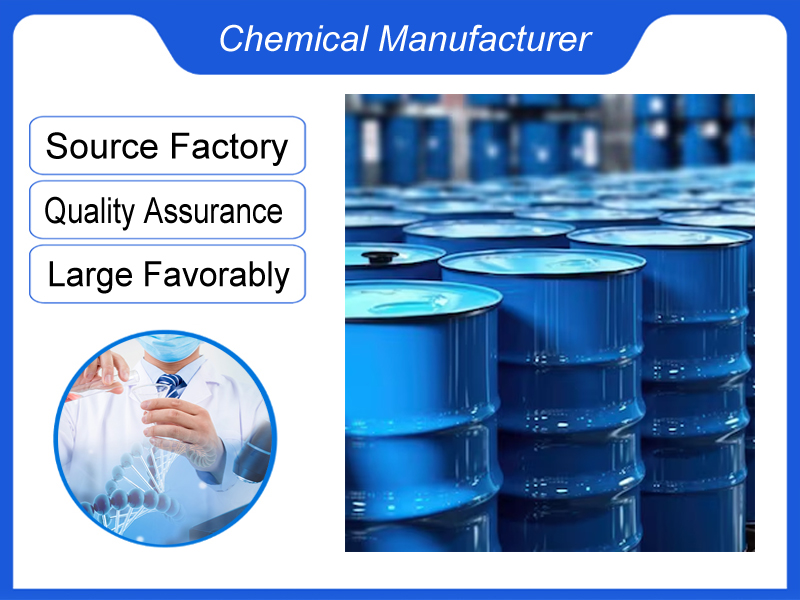
neopentyl glycol
126-30-7
C5H12O2
Uses:
The products are applied to synthetic unsaturated polyester resins, oil-free alkyd resins, plasticizers for polyurethane foams and elastomers, surfactants, insulating materia...
Category:Paint chemicals
Introduction
126-30-7
C5H12O2
Uses:
The products are applied to synthetic unsaturated polyester resins, oil-free alkyd resins, plasticizers for polyurethane foams and elastomers, surfactants, insulating materials, printing inks, polymerization blocking agents, and additives for synthetic aviation lubricant oils.
Names and Identifiers
| Name | 2,2-Dimethyl-1,3-propanediol |
| Synonyms | NEOPENTYL GLYCO Neopentyl glycol 2-ethylpropane-1,3-diol 2,2-Dimethylpropan-1,3-diol 2,2-Dimethyl-1,3 propandiol 2,2-dimethylpropane-1,3-diol 2,2-Dimethyl-1,3-propanediol 1,3-propanediol,2,2-dimethyl- 2,2-Dimethyl-1,3-dihydroxypropane 1,3-Dihydroxy-2,2-dimethylpropane 2,2-DIMETHYL-1,3-PROPANEDIOL (NPG) 2,2-dimethyl-1,3-propanediol (Neopentyl Glycol) |
| CAS | 126-30-7 |
| EINECS | 204-781-0 |
| InChI | InChI=1/C5H12O2/c1-2-5(3-6)4-7/h5-7H,2-4H2,1H3 |
Physico-chemical Properties
| Molecular Formula | C5H12O2 |
| Molar Mass | 104.15 |
| Density | 1.06 |
| Melting Point | 126-128°C |
| Boling Point | 208 °C |
| Flash Point | 107 °C |
| Water Solubility | 830 g/L (20 ºC) |
| Solubility | 830g/l |
| Vapor Presure | <0.8 mm Hg ( 20 °C) |
| Vapor Density | 3.6 (vs air) |
| Appearance | White crystal |
| Color | White |
| Merck | 14,6458 |
| BRN | 605291 |
| pKa | 14.57±0.10(Predicted) |
| Storage Condition | Inert atmosphere,Room Temperature |
| Stability | Stable. Incompatible with strong oxidizing agents, acetic anhydride, acid chlorides, moisture. Combustible. |
| Sensitive | Hygroscopic |
| Explosive Limit | 1.34%, 149°F |
| Refractive Index | 1.4406 (estimate) |
| MDL | MFCD00004685 |
| Physical and Chemical Properties | Properties of white crystalline solid, odorless, with hygroscopic. melting point 124~130 ℃ boiling point 210 ℃ relative density 1.06g/cm3 flash point 129 ℃ solubility, lower ketones, ethers and aromatic compounds, etc. |
| Use | Mainly used in the manufacture of resins, plasticizers and surfactants |
Risk and Safety
| Hazard Symbols | Xi – Irritant |
| Risk Codes | R36/37/38 – Irritating to eyes, respiratory system and skin. R36 – Irritating to the eyes R41 – Risk of serious damage to eyes |
| Safety Description | S26 – In case of contact with eyes, rinse immediately with plenty of water and seek medical advice. S36 – Wear suitable protective clothing. S39 – Wear eye / face protection. |
| WGK Germany | 1 |
| RTECS | TY5775000 |
| FLUKA BRAND F CODES | 3 |
| TSCA | Yes |
| HS Code | 29053990 |
Reference Information
| LogP | -0.15 at 25℃ |
| Uses | Mainly used in the manufacture of resins, plasticizers and surfactants Neopentyl glycol has a wide range of uses, mainly used for the production of unsaturated polyester resins, oil-free alkyd resins, plasticizers for polyurethane foams and elastomers, additives for advanced lubricating oils and other fine chemicals. Neopentyl glycol is an excellent solvent and can be used for selective separation of aromatic hydrocarbons and cycloalkyl hydrocarbons. Neopentyl glycol has water resistance, chemical resistance and weather resistance. Its amino baking paint has good gloss retention and does not turn yellow. It can also be used as a raw material for the production of polymerization inhibitors, stabilizers, and pesticides. Plasticizer. Organic synthesis. Polyester synthetic raw materials. |
| production method | 1. sodium formate isobutyraldehyde and formaldehyde are condensed in the presence of 30-35 ℃, pH 9-11, and alkali catalyst to generate hydroxyl tert-butyraldehyde, and excess formaldehyde is reduced to neopentyl glycol under strong alkali conditions, formaldehyde is oxidized and reacts with alkali to generate sodium formate. The reaction liquid is neutralized with formic acid, distilled and dehydrated under reduced pressure, and the concentrated liquid is extracted in layers. After removing sodium formate, it is cooled, crystallized and separated to obtain the finished product. 2. Hydrogenation method is obtained by condensation of isobutyraldehyde and formaldehyde to obtain hydroxyneopental, which is then obtained by hydrogenation reduction. |
| auto-ignition temperature | 750 °F |





